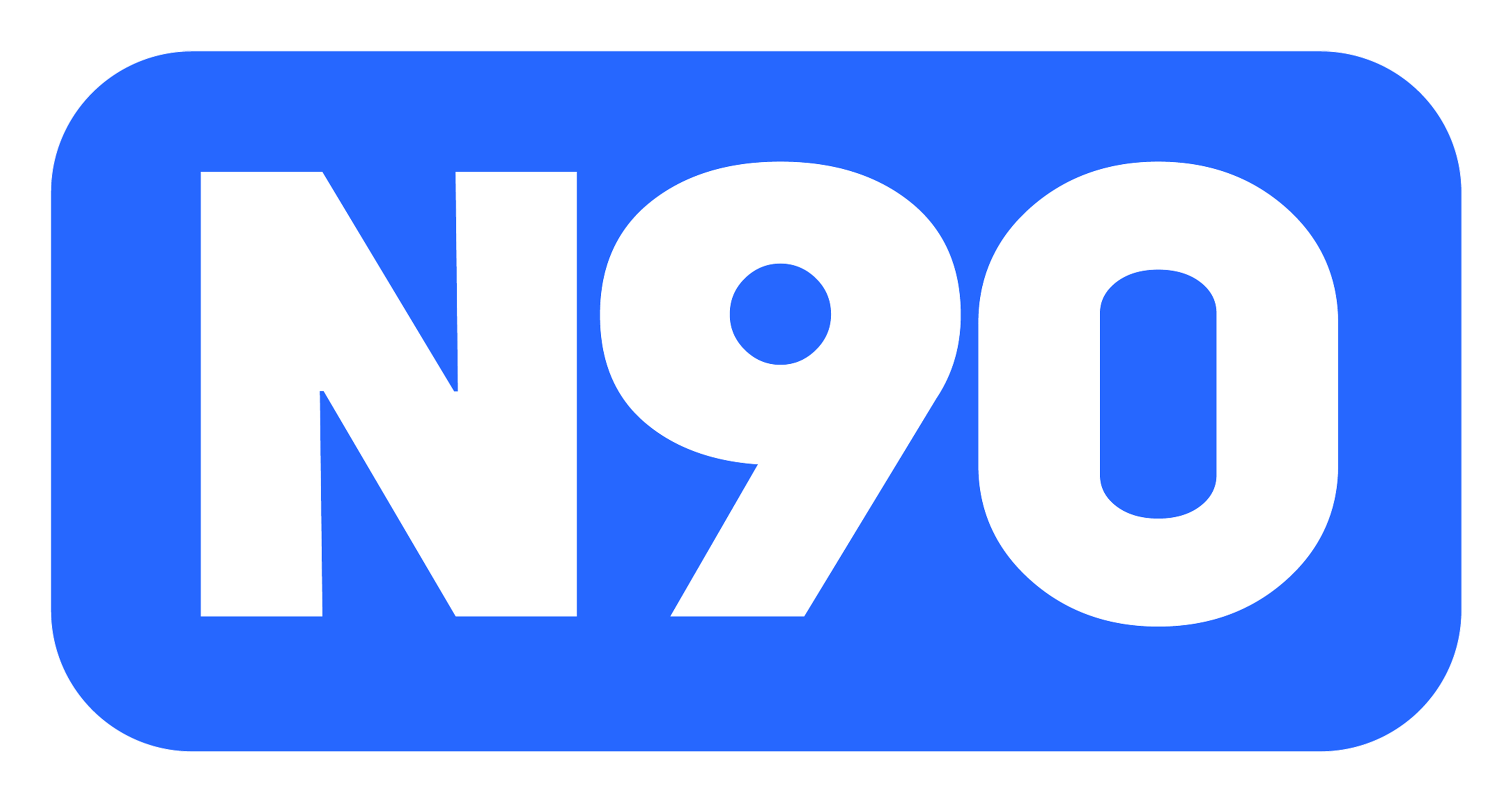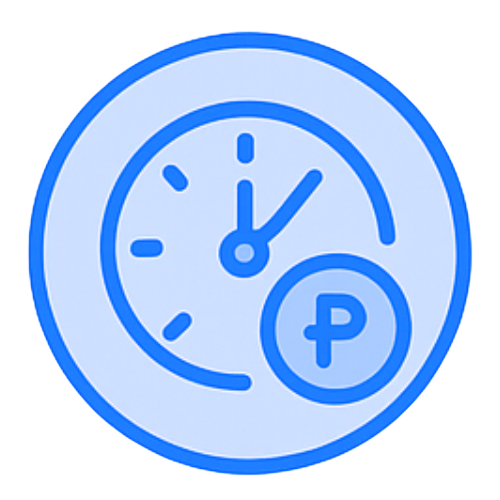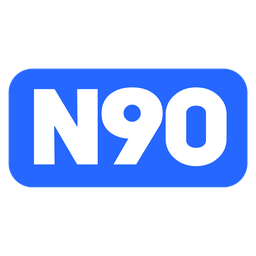Bank loans are a vital source of funding for individuals and businesses in the Philippines, providing the necessary capital for various financial needs. From purchasing a home to expanding a business, banks offer a wide range of loan products tailored to meet diverse requirements.
Each type of loan comes with its own set of features, terms, and benefits, making it crucial for borrowers to familiarize themselves with these options to make well-informed financial decisions that align with their financial goals.
Hence, to help you in your search for the right kinds of loans in the Philippines, we will explore the common types of bank loans available, highlighting their key features, benefits, and uses to provide you with a comprehensive overview of all available financing options.
Benefits of Bank Loans in The Philippines

Bank loans play a crucial role in the financial ecosystem of the Philippines, providing essential funding for both individuals and businesses. These loans offer a range of benefits that can help borrowers achieve their financial goals, whether it’s starting a new business, purchasing property, or managing personal expenses.
With structured repayment terms, competitive interest rates, and a variety of loan products, bank loans are designed to meet diverse financial needs. Hence, in this section, we will explore some of the key benefits of bank loans in the Philippines, highlighting how they can support economic growth and personal financial stability.
Here, take a look at some of the crucial benefits of bank loans in the Philippines -
1. Access to Capital
Bank loans provide essential funding for businesses and individuals, enabling them to pursue opportunities and meet financial needs. This access to capital can support business expansion, real estate purchases, education costs, and significant personal expenses that would be challenging to cover with personal savings alone.
2. Structured Repayment Terms
Bank loans come with structured repayment schedules, offering predictability and ease in financial planning. Borrowers can choose from a range of loan tenures, aligning repayment terms with their cash flow and financial capabilities. This structured approach helps in managing debt responsibly and avoiding financial strain.
3. Competitive Interest Rates
Banks often offer more competitive interest rates compared to other lending institutions. For borrowers with a good credit history, lower interest rates can significantly reduce the cost of borrowing, making bank loans a more affordable financing option for large purchases and investments.
4. Large Loan Amounts
Banks can provide larger loan amounts, which is beneficial for substantial investments such as real estate, business expansion, and significant personal projects. The ability to borrow large sums of money provides the necessary financial support for achieving major financial goals.
5. Credit Building
Successfully managing and repaying a bank loan can help improve a borrower’s credit score. A strong credit history opens up future borrowing opportunities with better terms and lower interest rates, thereby allowing long-term financial planning and stability.
6. Variety of Loan Products
Banks offer a diverse range of loan products, including personal loans, business loans, home loans, auto loans, and education loans. This variety allows borrowers to select the most suitable loan type for their specific needs, ensuring they get tailored financial solutions.
7. Professional Financial Guidance
Banks provide professional financial advice as part of their lending services, helping borrowers make informed decisions. This guidance can include loan product recommendations, financial planning tips, and support throughout the loan application process, enhancing the overall borrowing experience.
8. Security and Trust
As regulated financial institutions, banks offer a high level of security and trust. Borrowers can be confident that they are dealing with reputable lenders that comply with strict regulatory standards and ethical practices, ensuring a safe and reliable borrowing environment.
Also Read: Differences and Types of Commercial and Business Loans
Types of Consumer Loans in The Philippines
Consumer loans are essential financial tools that help individuals in the Philippines manage personal expenses, finance significant purchases, and achieve their financial goals. These loans come in various forms, each designed to cater to specific needs such as buying a home, purchasing a car, funding education, or covering emergency expenses.
Hence, potential borrowers need to understand the different types of consumer loans available in the Philippines to help them choose the most suitable option for their unique circumstances.
So, in this section of the article, we will provide an extensive overview of the common types of consumer loans available in the Philippines today and highlight their key features and benefits to guide borrowers the right and help them make the best financial decisions.
Here, take a look at all the kinds of consumer loans available in the Philippines -
1. Personal Loans
Personal loans are versatile, unsecured loans that can be used for a wide range of purposes, including medical expenses, home renovations, travel, and debt consolidation.
They typically have fixed interest rates and repayment terms, making them predictable and easy to manage. Banks and financial institutions offer personal loans with varying loan amounts and terms based on the borrower’s creditworthiness and financial profile.
2. Home Loans
Home loans, or mortgages, are designed to help individuals purchase residential properties. These loans usually have long repayment terms, ranging from 10 to 30 years, and can be either fixed-rate or variable-rate.
Home loans require collateral, typically the property being purchased, and involve a thorough evaluation of the borrower’s financial stability and credit history.
3. Auto Loans
Auto loans provide financing for the purchase of new or used vehicles. These loans can be secured with the vehicle as collateral or unsecured, and they usually have fixed interest rates and repayment terms.
Auto loans are offered by banks, credit unions, and car dealerships, and they help make vehicle ownership more accessible by spreading the cost over several years.
4. Credit Card Loans
Credit card loans are a form of revolving credit that allows consumers to borrow up to a certain limit for various purchases. Credit cards offer flexibility and convenience, as borrowers can use them for everyday expenses or larger purchases.
However, they often come with higher interest rates compared to other loan types, and managing credit card debt requires discipline to avoid high interest charges.
5. Education Loans
Education loans, or student loans, are specifically designed to cover the cost of higher education, including tuition, books, and living expenses. Students or their parents can take these loans, and usually offer flexible repayment terms and lower interest rates.
Some education loans also offer deferred repayment options until after graduation.
6. Salary Loans
Salary loans are short-term, unsecured loans that are typically offered to employees based on their salary. These loans are designed to provide quick access to cash for emergency expenses and are repaid through salary deductions.
Salary loans have shorter repayment terms and higher interest rates, reflecting the convenience and speed of access.
7. Housing Improvement Loans
Housing improvement loans are designed to finance home renovations and repairs. These loans help homeowners enhance their living spaces and increase property value.
They can be secured or unsecured, with varying terms and interest rates depending on the lender and the borrower’s financial situation.
8. Health and Medical Loans
Health and medical loans provide financing for medical expenses that are not covered by insurance, such as surgeries, treatments, and emergency care. These loans offer quick access to funds with manageable repayment terms, helping individuals cover high medical costs without depleting their savings.
Also Read: Types of Business Loans in the Philippines
Secured Vs. Unsecured Personal Loans - What Are They And What Are Their Key Differences
Personal loans are a popular financing option for individuals looking to cover various expenses, from home renovations to debt consolidation. These loans can be categorized into two main types: secured and unsecured.
Secured loans require collateral, offering lower interest rates and higher borrowing limits but with the risk of asset forfeiture. Unsecured loans, on the other hand, do not require collateral, providing greater flexibility but often at higher interest rates.
So, now that we know what secured and unsecured loans are, let us now explore some of the fundamental distinctions between them while also highlighting their key features.
Here, take a look at some of their key differences -
1. Need For Collateral
Secured personal loans require borrowers to pledge an asset, such as a house, car, or savings account, as collateral to secure the loan. This collateral reduces the lender's risk, as they can seize the asset if the borrower defaults on the loan.
In contrast, unsecured personal loans do not require any collateral, making them accessible without risking personal assets. However, this lack of security increases the lender's risk, often resulting in higher interest rates and more stringent approval criteria.
2. Interest Rates
Secured loans typically offer lower interest rates because the collateral reduces the lender's risk. The assurance of asset recovery in case of default allows lenders to charge more favorable rates.
Unsecured loans, on the other hand, generally come with higher interest rates. Since these loans are not backed by collateral, lenders compensate for the increased risk by charging higher rates, making borrowing more expensive for the consumer.
3. Borrowing Limits
With secured loans, borrowers can often access larger loan amounts due to the collateral provided. The value of the collateral gives lenders confidence in the borrower's ability to repay, enabling them to offer higher loan limits.
In contrast, unsecured loans usually have lower borrowing limits. The absence of collateral means lenders are more cautious, providing smaller loan amounts to mitigate potential losses in case of default.
4. Approval Criteria
Secured loans may be easier to obtain since the collateral decreases the lender's risk, allowing for more lenient approval criteria. Lenders are more willing to approve these loans even if the borrower has a lower credit score.
Unsecured loans require strict approval criteria, heavily relying on the borrower’s creditworthiness, income, and financial history. Borrowers need a strong credit profile to qualify, as lenders have no collateral to fall back on if the loan is not repaid.
5. Risk to Borrower
Secured loans carry the risk of asset forfeiture if the borrower defaults. The pledged collateral can be seized by the lender, which can be a significant loss to the borrower.
Conversely, unsecured loans do not pose a risk to the borrower’s assets, as no collateral is required. However, failing to repay an unsecured loan can severely damage the borrower’s credit score, leading to difficulties in obtaining future credit and higher borrowing costs.
Also Read: Choosing the Right Business Loan for Your Company's Growth
Ready to break past limitations and propel your Philippine business to new heights? N90's fast financing solutions are your launchpad! Our streamlined application process gets you started quickly and efficiently. Apply Now!
What Are Commercial Loans?

Commercial loans are a type of financing specifically designed to meet the needs of businesses rather than individuals. These loans are typically used to fund a variety of business activities, including expansion, equipment purchases, inventory acquisition, and real estate investments.
Offered by banks and other financial institutions, commercial loans come with various terms and interest rates, often tailored to the financial health and creditworthiness of the business.
Here, take a look at the different types of commercial loans available in the Philippines -
1. Term Loans
Term loans are one of the most common types of commercial loans. These loans provide a lump sum of capital that the business repays over a fixed period, usually with a fixed or variable interest rate.
Term loans are typically used for significant investments such as purchasing equipment, expanding operations, or acquiring other businesses.
2. Lines of Credit
A commercial line of credit offers businesses flexible access to funds up to a predetermined credit limit. Businesses can draw and repay funds as needed, making it ideal for managing cash flow fluctuations and covering short-term operational expenses.
Interest is only charged on the amount borrowed, providing a cost-effective solution for ongoing financial needs.
3. Equipment Loans
Equipment loans are specifically designed to finance the purchase of business equipment. The equipment itself often serves as collateral for the loan, which can help secure lower interest rates.
These loans are essential for businesses that need to acquire machinery, technology, or vehicles to enhance productivity and operations.
4. Commercial Real Estate Loans
Commercial real estate loans are used to purchase, develop, or refinance commercial properties, such as office buildings, warehouses, and retail spaces.
These loans typically have longer repayment terms and may require a significant down payment. They are crucial for businesses looking to invest in or expand their physical locations.
5. Invoice Financing
Invoice financing allows businesses to borrow against their outstanding invoices. This type of loan helps improve cash flow by providing immediate funds while waiting for customers to pay their invoices.
It is particularly useful for businesses with long payment cycles or those experiencing temporary cash flow issues.
6. SBA Loans
Small Business Administration loans, commonly known as SBA loans, are partially guaranteed by the government, which reduces the risk for lenders and often results in more favorable terms for borrowers.
These loans can be used for various business purposes, including working capital, equipment purchases, and real estate investments. SBA loans are known for their competitive interest rates and long repayment terms.
7. Merchant Cash Advances
A merchant cash advance provides businesses with a lump sum of capital in exchange for a percentage of future sales. This type of financing is often used by businesses with high credit card sales volumes and can be a quick way to access funds. However, it typically comes with higher costs compared to traditional loans.
8. Bridge Loans
Bridge loans are short-term loans intended to bridge the gap between immediate financing needs and long-term funding solutions. They are commonly used in real estate transactions to secure a property quickly while waiting for permanent financing. Bridge loans are characterized by their short repayment terms and higher interest rates.
9. Microloans
Microloans are smaller loans designed for startups and small businesses that may not qualify for traditional bank loans. These loans are typically offered by non-profit organizations and government programs.
Microloans can be used for various business needs, such as purchasing inventory, equipment, or working capital.
Special Loan Types Available in The Philippines
The financial landscape in the Philippines offers a variety of special loan types designed to cater to the unique needs of different segments of the population. These specialized loans provide targeted financial solutions for specific purposes such as housing, education, business development, and emergency assistance.
Here, let us shed some light on some of the special loan types available in the Philippines -
1. Pag-IBIG Housing Loans
Pag-IBIG Fund offers housing loans to its members for purchasing residential properties, home construction, or home improvement. These loans come with competitive interest rates and flexible repayment terms, making homeownership more accessible to Filipinos.
The loan amount and terms depend on the member's contributions and repayment capacity.
2. Social Security System (SSS) Salary Loans
The SSS provides salary loans to its members based on their monthly contributions. These short-term loans are designed to help members meet immediate financial needs, such as medical emergencies or personal expenses.
The loan amount is typically a multiple of the borrower's monthly salary credit, and repayment is usually deducted from the borrower's salary.
3. GSIS Emergency Loans
The Government Service Insurance System (GSIS) offers emergency loans to its members affected by calamities or personal emergencies. These loans provide quick access to funds with favorable terms to help members recover from unexpected events.
The loan amount and repayment terms are determined by the member's contribution history and financial need.
4. Educational Loans
Various banks and government institutions in the Philippines offer educational loans to help students finance their education. These loans cover tuition fees, books, and other educational expenses.
They often come with flexible repayment terms and lower interest rates, making higher education more accessible to students and their families.
5. OFW Loans
Overseas Filipino Workers (OFWs) can access specialized loan products designed to support their unique financial needs. These loans can be used for various purposes, including business start-ups, home purchases, or personal expenses.
OFW loans typically offer flexible repayment terms and competitive interest rates, considering the income stability of the borrower working abroad.
6. Microfinance Loans
Microfinance institutions provide small loans to low-income individuals and small businesses that may not qualify for traditional bank loans. These loans support entrepreneurship and economic development in underserved communities.
Microfinance loans usually have flexible terms and are designed to be easily accessible, often requiring minimal documentation.
7. Agricultural Loans
Agricultural loans are tailored to support farmers and agribusinesses. These loans can be used for various purposes, including purchasing seeds, fertilizers, and equipment, and expanding farming operations.
Banks and government programs offer agricultural loans with favorable terms to promote agricultural productivity and sustainability.
8. Business Loans for MSMEs
Micro, Small, and Medium Enterprises (MSMEs) can access various business loans designed to support their growth and development. These loans can be used for working capital, equipment purchase, inventory expansion, or business expansion.
MSME loans often come with competitive interest rates and are offered by both banks and government programs like the Small Business Corporation (SB Corp).
9. Green Loans
Green loans are designed to support environmentally sustainable projects and initiatives. These loans can be used for renewable energy projects, energy efficiency improvements, and other eco-friendly investments.
Green loans often come with favorable terms and lower interest rates to encourage sustainable practices among businesses and individuals.
Also Read: Non-Collateral Startup Business Loans in the Philippines
How To Apply For a Loan in The Philippines - Important Points To Remember For a Successful Loan Application Process
Applying for a loan in the Philippines involves several critical steps and considerations to ensure a smooth and successful application process. Whether you're seeking a personal loan, business loan, or specialized financing, understanding the key requirements and best practices can significantly enhance your chances of approval.
So in this section, we’ll outline all the essential points to remember when applying for a loan in the Philippines that’ll help you go through the entire application process efficiently and effectively to secure the financial support you need.
Here, take a look at all the important steps to consider when applying for a loan in the Philippines -
1. Understand Your Financial Needs
Before applying for a loan, clearly define the purpose of the loan and the exact amount you need. Whether it’s for personal expenses, business expansion, or emergency funds, knowing your financial needs will help you choose the right loan product and avoid overborrowing or underborrowing.
2. Choose the Right Loan Product
Different loans cater to different needs. Research and select the loan type that best suits your requirements, such as personal loans, business loans, home loans, or educational loans. Each loan type has its own terms, interest rates, and eligibility criteria.
3. Check Your Credit Score
Your credit score is a crucial factor in loan approval. Lenders use it to assess your creditworthiness. Obtain a copy of your credit report, check for errors, and take steps to improve your score if necessary. A higher credit score can lead to better loan terms and higher chances of approval.
4. Gather Necessary Documentation
Prepare all required documents in advance to streamline the application process. Common documents include proof of identity, proof of income, bank statements, tax returns, business registration (for business loans), and collateral documents (for secured loans). Ensure all documents are up-to-date and accurately reflect your financial status.
5. Compare Lenders
Different lenders offer varying loan terms, interest rates, and fees. Compare multiple lenders to find the best deal. Consider banks, credit unions, online lenders, and government programs. Pay attention to the annual percentage rate (APR), which includes both the interest rate and any additional fees.
6. Understand Loan Terms and Conditions
Read and understand the loan agreement thoroughly before signing. Pay attention to the interest rate, repayment schedule, fees, and penalties. Ensure you are comfortable with the terms and that you can meet the repayment obligations.
7. Complete the Application Form Accurately
Fill out the loan application form accurately and completely. Incomplete or incorrect information can delay the processing of your application or lead to rejection. Double-check all details before submitting the form.
8. Prepare for the Interview
Some lenders may require a personal or business interview as part of the application process. Be prepared to discuss your financial situation, the purpose of the loan, and how you plan to repay it. Be honest and transparent with your answers.
9. Wait For The Loan To Be Processed
Loan approval can take time, depending on the lender and the complexity of your application. Be patient and avoid applying for multiple loans simultaneously, as this can negatively impact your credit score. Follow up with the lender if necessary to check the status of your application.
10. Plan for Repayment
Once your loan is approved, create a repayment plan to ensure you make timely payments. Consider setting up automatic payments to avoid missing due dates. Timely repayments will improve your credit score and help you avoid late fees and penalties.
Also Read: Finding Low-Interest Business Loans in the Philippines
How To Choose The Right Type of Loan in The Philippines
Selecting the right type of loan in the Philippines is essential for meeting your financial needs effectively and efficiently. With a variety of loan options available, including personal loans, business loans, home loans, and specialized loans, it's crucial to understand the specific features and benefits of each type.
In this section, we will provide all the important points to keep in mind when you’re out there looking to select the right type of loan in the Philippines. These points will help you navigate the plethora of loan options available and select the best financing solution for your needs.
Here, take a look at all the important points to consider when selecting the best loan type that aligns with your financial requirements -
1. Identify Your Financial Needs
Determine the specific purpose of the loan. Are you looking to finance a home, start or expand a business, cover educational expenses, or manage personal emergencies? Knowing the exact reason will help you narrow down the appropriate loan types that suit your requirements.
2. Understand Different Loan Types
Familiarize yourself with various loan options available in the Philippines. Some of the common varieties are -
- Personal Loans: For general purposes like medical expenses, travel, or home renovations.
- Home Loans: For purchasing or renovating residential properties.
- Business Loans: For starting or expanding business operations.
- Auto Loans: For buying vehicles.
- Educational Loans: To cover tuition fees and other educational costs.
- Special Loans: Such as Pag-IBIG housing loans, SSS salary loans, and microfinance loans for specific needs.
3. Assess Interest Rates and Terms
Compare interest rates and loan terms among different lenders. Lower interest rates reduce the overall cost of the loan, while favorable terms ensure that repayments fit within your budget. Consider both fixed and variable interest rates, and choose the one that best suits your financial situation.
4. Evaluate Eligibility Requirements
Check the eligibility criteria for each loan type. Some loans require collateral, while others are unsecured. Ensure you meet the minimum income, employment history, credit score, and other specific requirements to increase your chances of approval.
5. Consider Repayment Terms
Review the repayment schedule and tenure for different loans. Choose a loan with repayment terms that align with your cash flow and financial capability. Longer tenures may mean lower monthly payments but higher total interest costs, whereas shorter tenures might have higher monthly payments but lower overall interest.
6. Check Fees and Additional Costs
Look beyond interest rates and consider other fees such as processing fees, administrative fees, early repayment penalties, and late payment charges. These additional costs can significantly impact the total cost of the loan.
7. Seek Professional Advice
Consult with financial advisors or loan officers to get personalized recommendations based on your financial situation and goals. They can provide insights into the best loan options and help you understand the fine print of loan agreements.
8. Read Reviews and Testimonials
Research and read reviews from other borrowers about their experiences with different lenders. This can provide valuable information on customer service, loan processing times, and overall satisfaction.
9. Use Loan Calculators
Utilize online loan calculators to estimate monthly repayments and total loan costs for different loan types. This helps in visualizing the financial commitment and planning your budget accordingly.
Conclusion
And there you have it. It is fair to say that understanding the common types of bank loans available in the Philippines is essential for individuals and businesses seeking to secure the necessary funding for their various financial needs.
From personal loans for covering general expenses to home loans for purchasing property and business loans for expanding operations, each loan type offers specific features and benefits tailored to different requirements.
Additionally, specialized loans such as auto loans, educational loans, and microfinance loans provide targeted financial solutions for specific purposes.
By familiarizing yourself with these available loan options, you can select the most appropriate loan type that will not only help you effectively manage your financial obligations but also support your personal and business financial goals.
Frequently Asked Questions (FAQs)
1. What are the 7 kinds or classifications of banks in the Philippines?
The Philippine banking system offers a variety of options to suit your needs. There are 7 main classifications: Universal Banks, Commercial Banks, Thrift Banks, Rural Banks, Cooperative Banks, Islamic Banks, and Digital Banks.
2. What are the three most common types of loans in the Philippines?
In the Philippines, the three most common loan types are:
- Personal Loans: Used for various personal needs like debt consolidation, home renovations, or medical expenses.
- Salary Loans: Short-term loans based on your salary, which are ideal for immediate needs.
- Home Loans: Long-term financing to purchase a house or condo, often secured by the property itself.
3. Which type of loan is best in the Philippines?
The best loan in the Philippines depends on your needs, but in general, personal loans are versatile for various uses, while salary loans offer quick cash, and for homes, home loans are common. Consider factors like interest rates, repayment terms, and your financial situation to choose the most suitable option.
4. What type of loan is the safest?
Generally, secured loans are considered safer for lenders, translating to potentially lower interest rates for borrowers. They require collateral, like a car or property, that the lender can seize if you can't repay. However, this also means risking losing the collateral.
On the other hand, unsecured loans prioritize flexibility but may come with higher interest rates. So, the safest loan option ultimately depends on your risk tolerance and financial situation.













